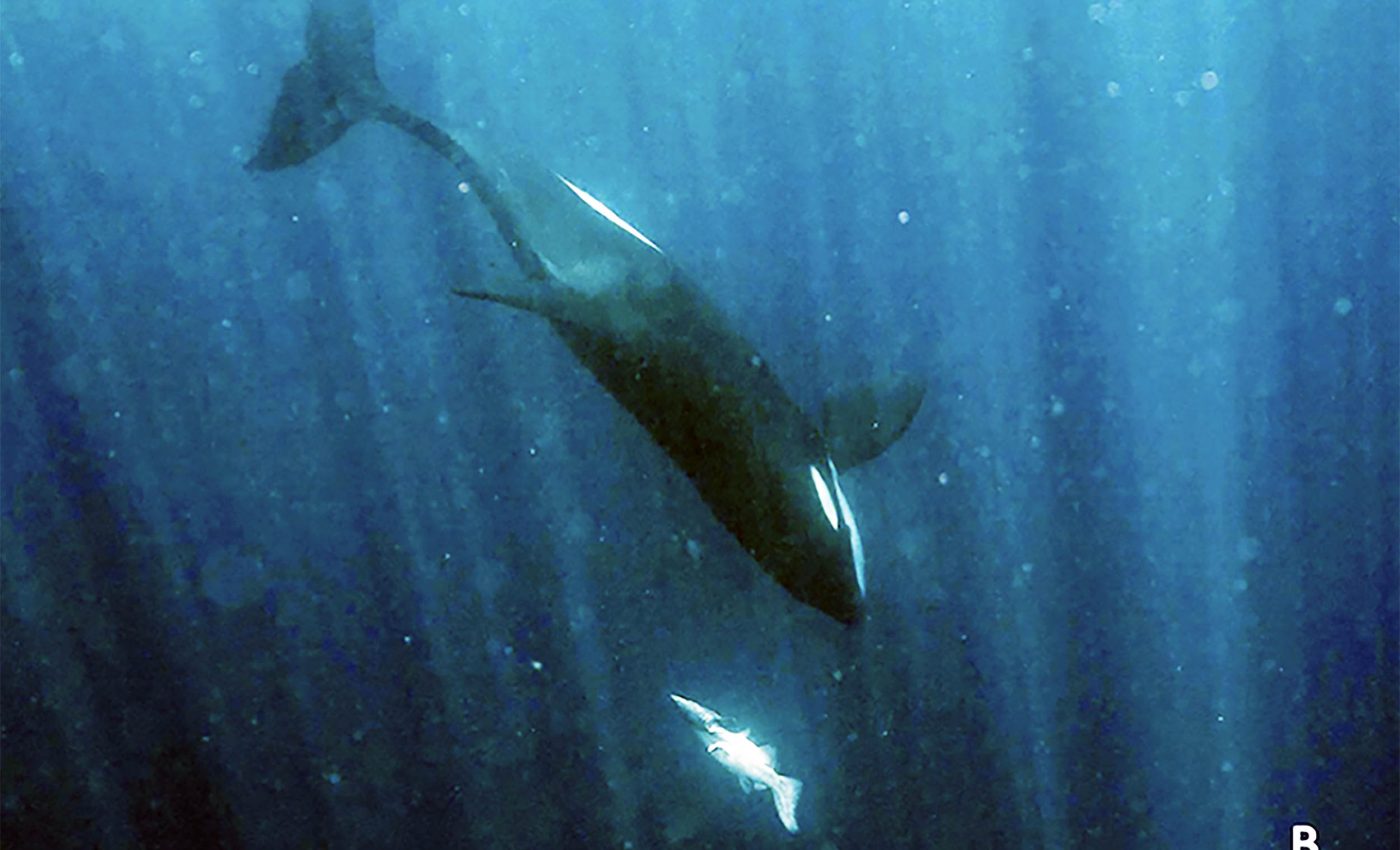
Deep-sea photos capture killer whales attacking a rare prickly shark for the first time ever
A rarely seen shark that spends its life in the darkest waters has been thrust into the spotlight by a surprising new predator. Recent reports indicate that killer whales have been captured on camera going after a prickly shark nearly 3,600 feet down, marking the first documented attack of its kind.
This footage offers new insight into the behavior of these apex hunters and the quiet giants lurking along the ocean floor.
Researchers find the event both curious and concerning, given how little is known about the slow-moving prickly shark, the status of which is officially given as “data deficient.”
“The sighting of the rare prickly shark aggregating on Panama’s seamounts is a momentous find,” said Stefanie Kaiser from the Senckenberg Research Institute and Natural History Museum. She highlighted the importance of these sightings.
Understanding the prickly shark
Prickly sharks (Echinorhinus cookei) spend much of their lives away from human view, tucked below 100 feet (30 meters) and down as deep as 3,600 feet (1,097 meters) in tropical and temperate waters.
They have a bulky form and multiple, thorn-like denticles along their skin, which act as a tough shield.
Each shark can grow to about 13 feet (4 meters) in length. They move slowly, which may make them vulnerable if a skilled hunter manages to get close enough for a strike.
Why orcas matter here
Killer whales, also known as orcas (Orcinus orca), are considered apex predators. They are highly social mammals with strong group coordination, and they can weigh anything between 8 and 11 short tons.
In many regions, their prey includes seals, rays, and sometimes large sharks.
A prickly shark poses a challenge because of its spiny hide, yet the event captured in the Gulf of California suggests orcas can adapt to unexpected prey when the situation calls for it.
Collaborative sightings and research
Local fishers, tourist operators, and scientists joined forces to share observations that shed light on this under-studied shark species.
In one notable discovery, a camera positioned about 50 feet (15 meters) away recorded a group of orcas closing in on a solitary prickly shark, while employing coordinated tail slaps and strategic teamwork.

“These images, along with personal accounts, confirm unusual feeding behavior in a deep-sea environment,” reported the team behind this finding.
They consider this coordinated orca strategy a sign of how flexible these whales can be when scouring for scarce food sources.
Links to human activity
Some observers believe industrial fishing may be leaving an ecological vacuum. Overexploitation of top predators in many coastal zones pressures orcas to roam different waters in search of sustenance. They appear ready to exploit new feeding options, including bottom-dwelling species.
Although official records remain sparse, fishers near the southwestern Gulf of California say the prickly shark is occasionally brought up as bycatch on deep-set gear.
Such reports highlight the urgency of learning more about its life cycle and movement patterns.
Prickly shark conservation
Management plans for deep-sea creatures face an uphill battle when so little data exist. Conservationists seek more thorough tracking of fishing activities, and enforcement in protected zones.
“Some of the best ways to reinforce the protection of the Marine Protected Area is by keeping the satellite monitoring program of fishing vessels in the area operational 24/7,” said Kaiser.
She and others want to detect unlawful practices that may jeopardize seldom-seen marine life.
Seamounts as hidden havens
Certain rocky structures under the sea – often called seamounts – are teeming with exotic species that gather there for food or mating.
Sharks rely on these areas for improved feeding opportunities and cooler waters, whether cruising just a few hundred feet below the surface or descending thousands of feet.
Prickly sharks spotted in these locales reinforce the idea that seamounts act like underwater oases for biodiversity.
Since orcas can be flexible, they might turn their attention to these zones, heightening the need for stricter oversight of fishing vessels around them.
Where science goes next
Researchers want to learn whether prickly sharks rely on these depths for most of their life stages or whether they only make seasonal journeys.
They also hope to reveal how often killer whales target them. Updates to industrial fishing policies may arise if these predatory interactions influence shark populations across the eastern Pacific.
More advanced tagging, underwater surveys, and ongoing input from local communities will help paint a clearer picture.
Experts consider each fresh glimpse into the life of spiny sharks a critical step toward protecting a creature whose future remains uncertain.
The study is published in Frontiers in Fish Science.
—–
Like what you read? Subscribe to our newsletter for engaging articles, exclusive content, and the latest updates.
Check us out on EarthSnap, a free app brought to you by Eric Ralls and Earth.com.
—–












